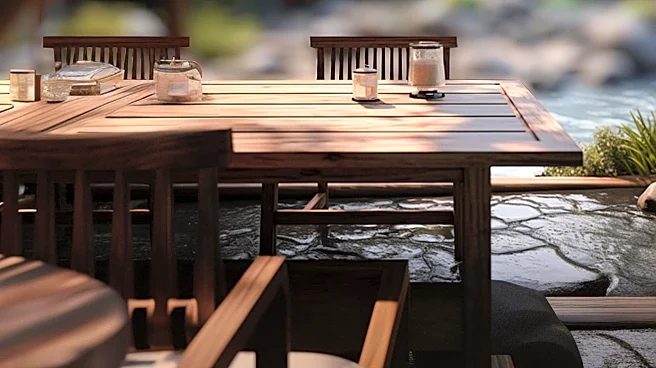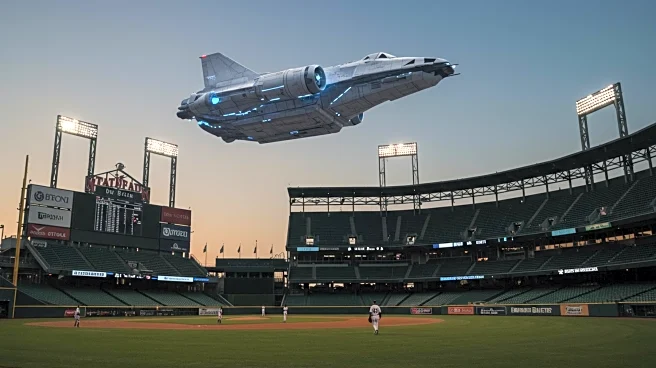What's Happening?
Fallingwater, the iconic architectural masterpiece designed by Frank Lloyd Wright, is undergoing a significant $7 million renovation to address persistent water infiltration issues. Located in Pennsylvania's Laurel Highlands, the UNESCO World Heritage site has been plagued by leaks since its construction in the late 1930s. The renovation involves replacing roofs, flashing, window and door frames, and exterior walls, all while adhering to strict historic preservation standards. The project aims to eliminate the need for buckets to catch leaks, a common issue in Wright's designs. The renovation is expected to be completed by spring 2026, coinciding with the 90th anniversary of the home's construction.
Why It's Important?
The renovation of Fallingwater is crucial for preserving one of the most significant architectural works of the 20th century. As a UNESCO World Heritage site, Fallingwater attracts approximately 140,000 visitors annually, contributing to local tourism and the economy. Addressing the leaks ensures the longevity of the structure and the safety of its visitors. The project also highlights the challenges of maintaining historic buildings, balancing modern technology with original design principles. Successful completion of the renovation will reinforce the importance of preserving cultural heritage sites and may influence future restoration projects across the U.S.
What's Next?
The renovation is scheduled to be completed by spring 2026, just in time for the 90th anniversary of Fallingwater's construction. During this period, visitors can expect to see ongoing work and may have opportunities to participate in special preservation tours. The completion of the renovation will allow Fallingwater to return to normal operations, providing an uninterrupted experience for visitors. The project may also serve as a case study for other historic preservation efforts, potentially influencing techniques and standards in the field.
Beyond the Headlines
The renovation of Fallingwater underscores the broader implications of historic preservation, including the ethical responsibility to maintain cultural landmarks for future generations. It also highlights the technical challenges involved in preserving structures that were not originally designed to withstand modern environmental conditions. The project may inspire discussions on the balance between preserving original architectural intent and incorporating contemporary solutions to address structural issues.













